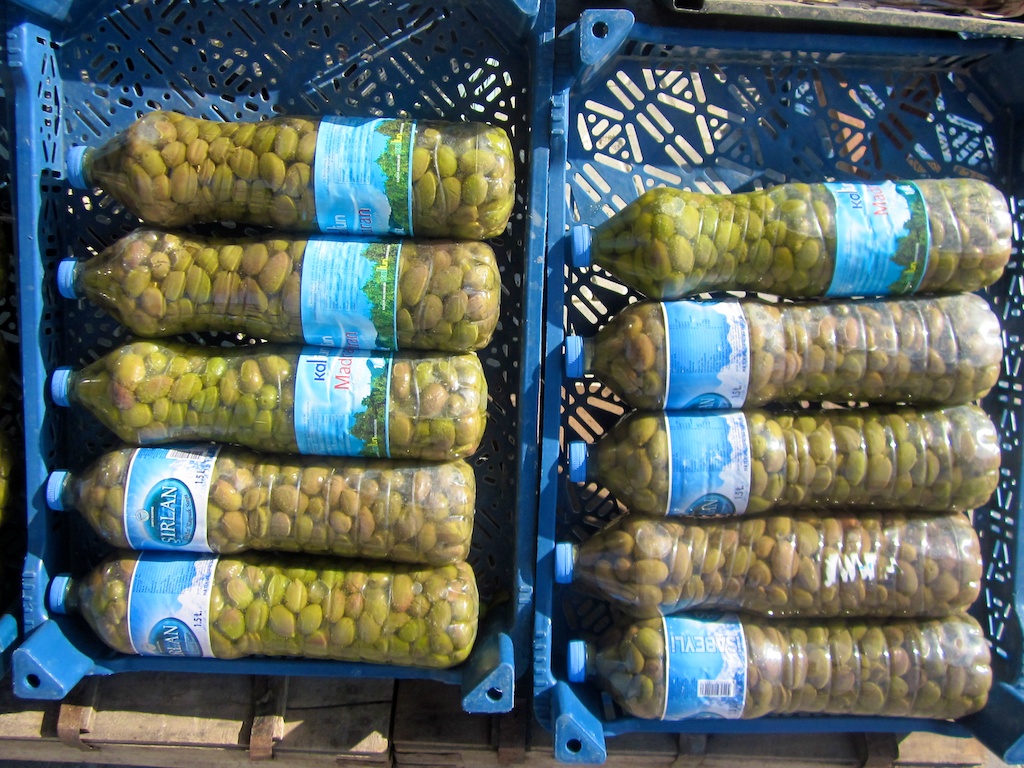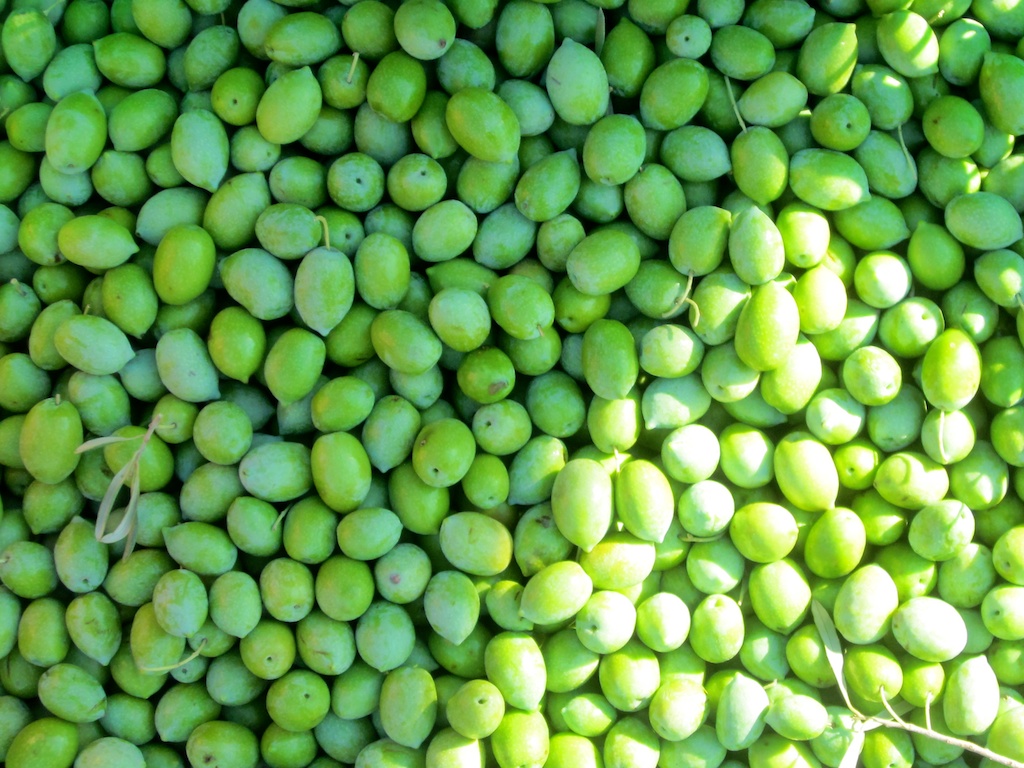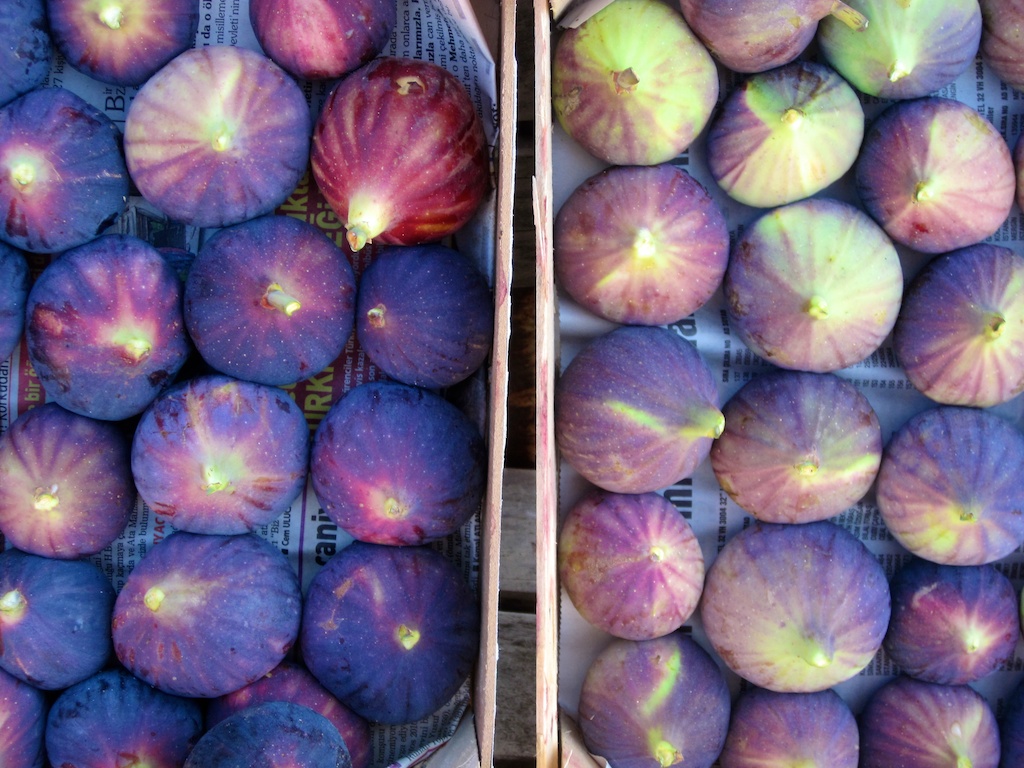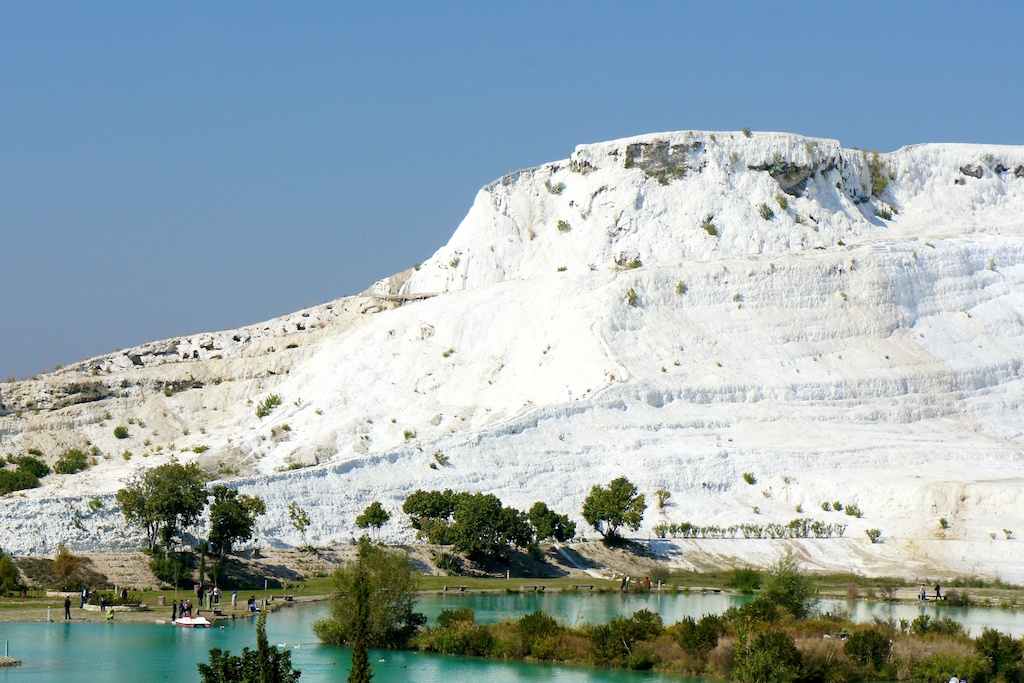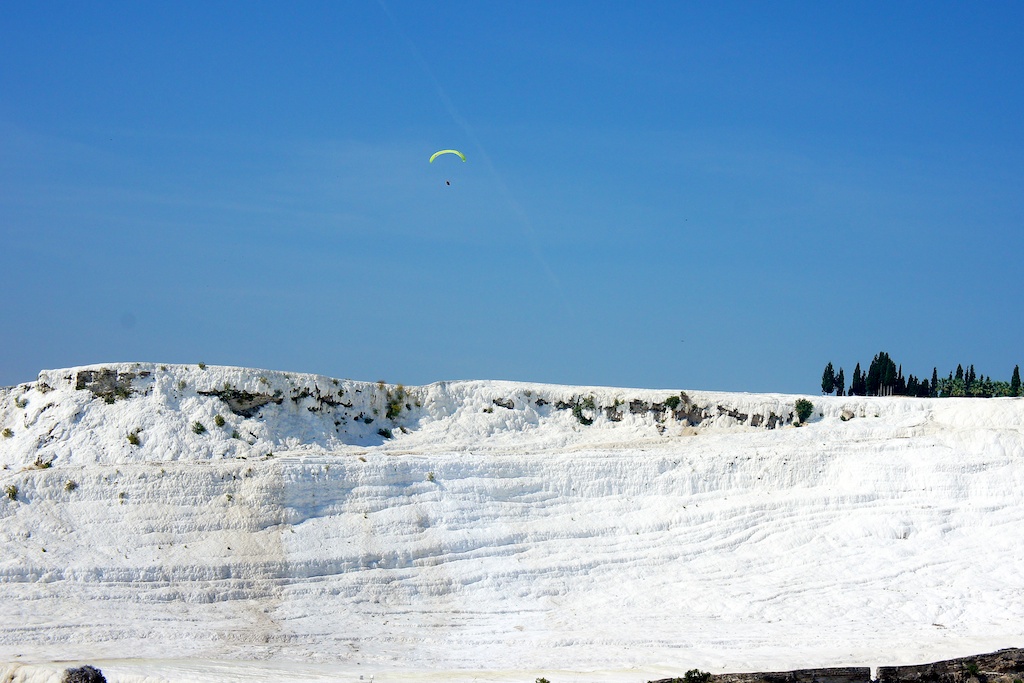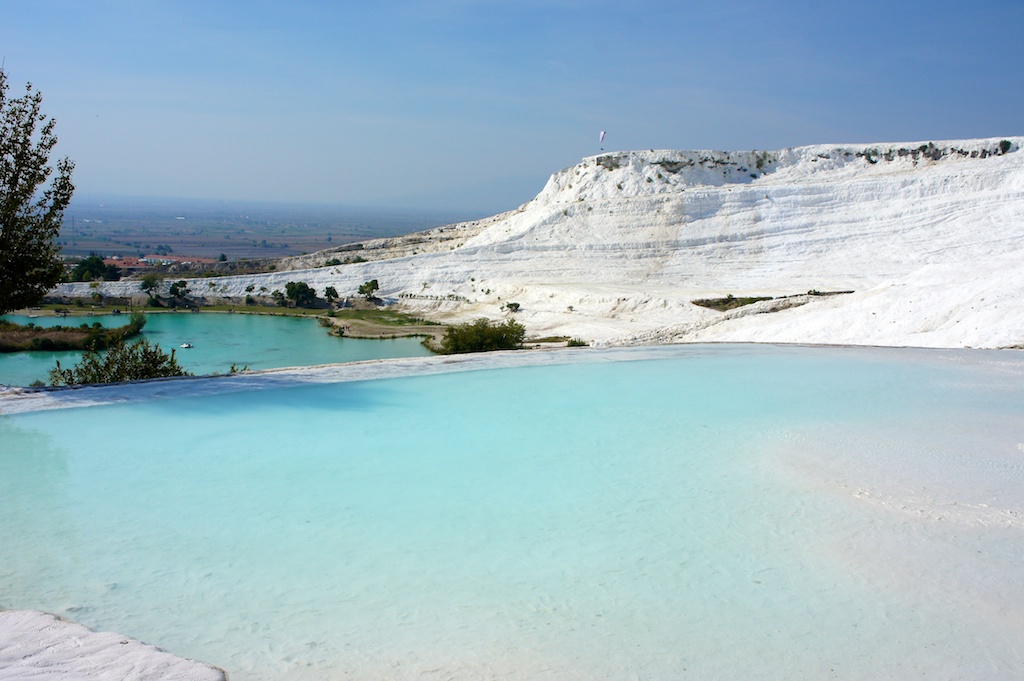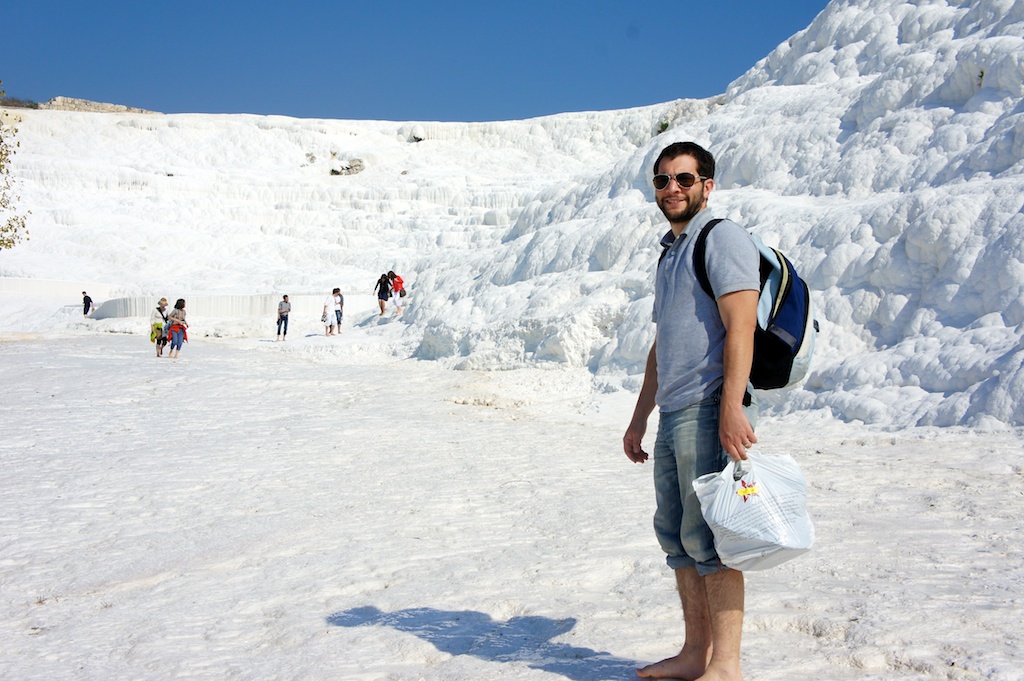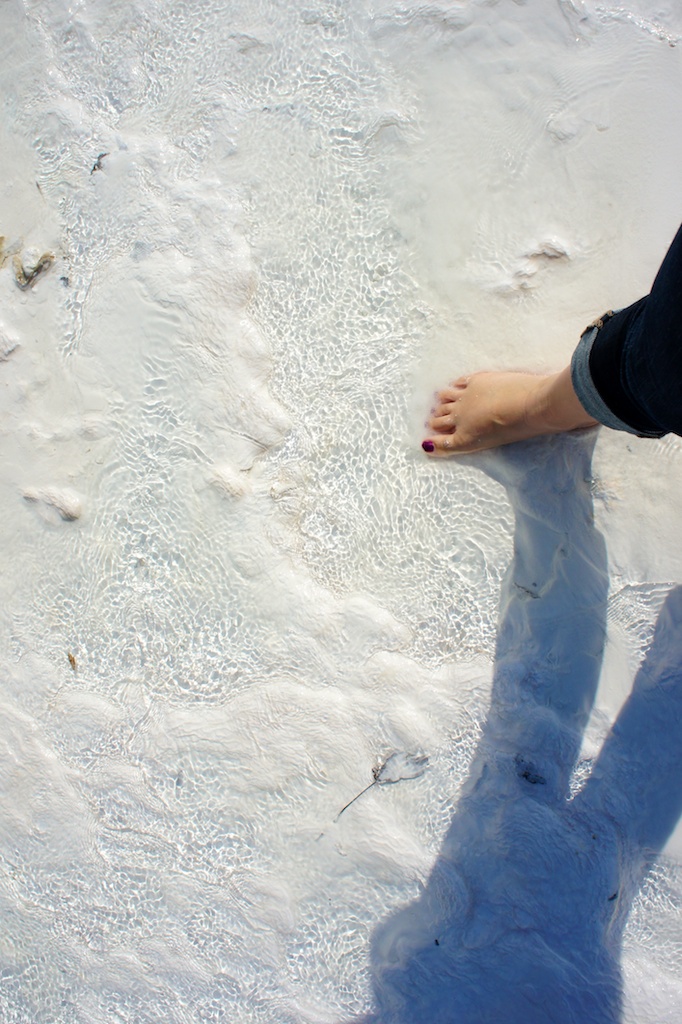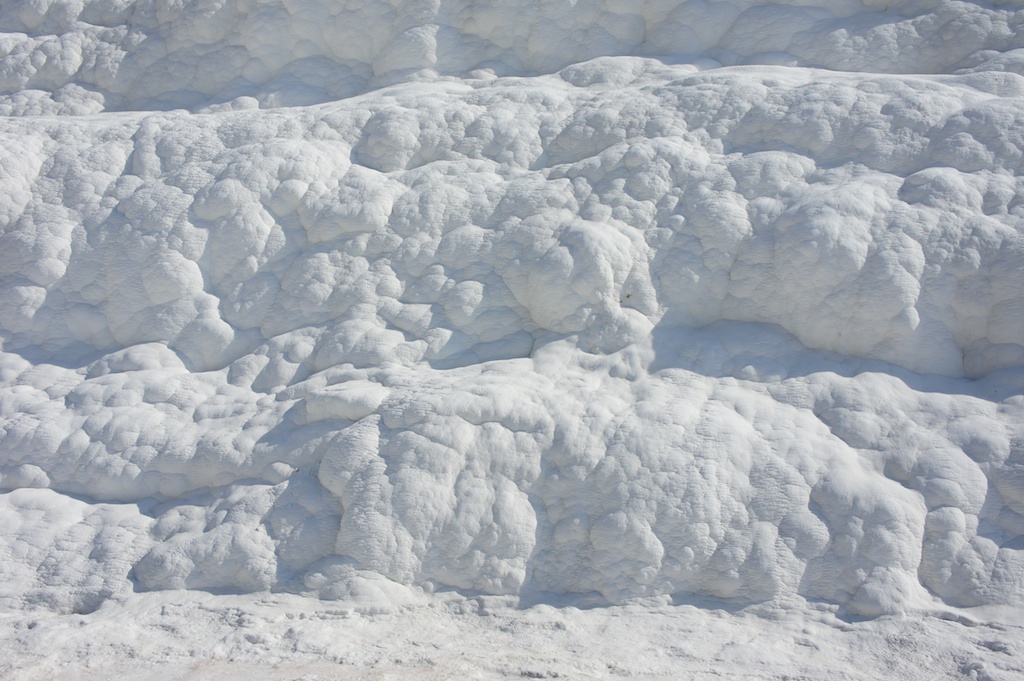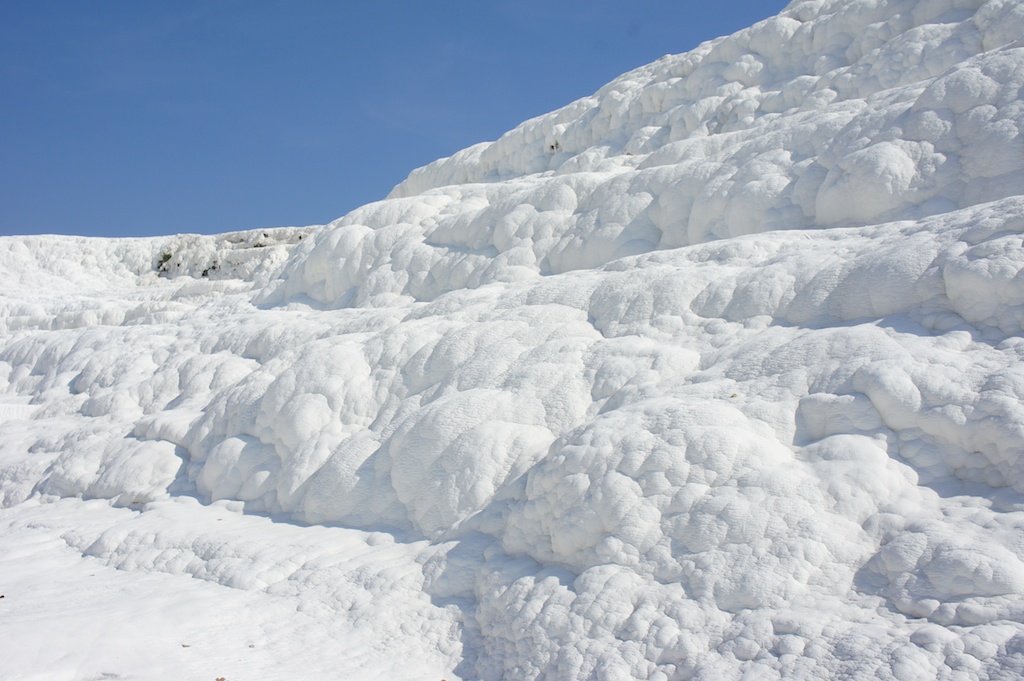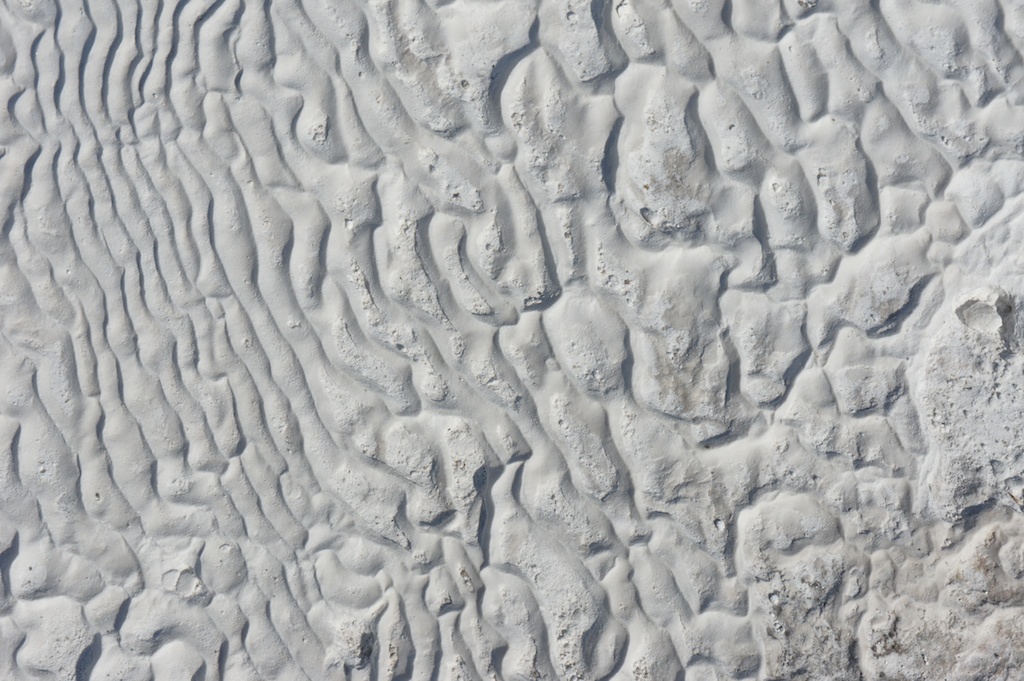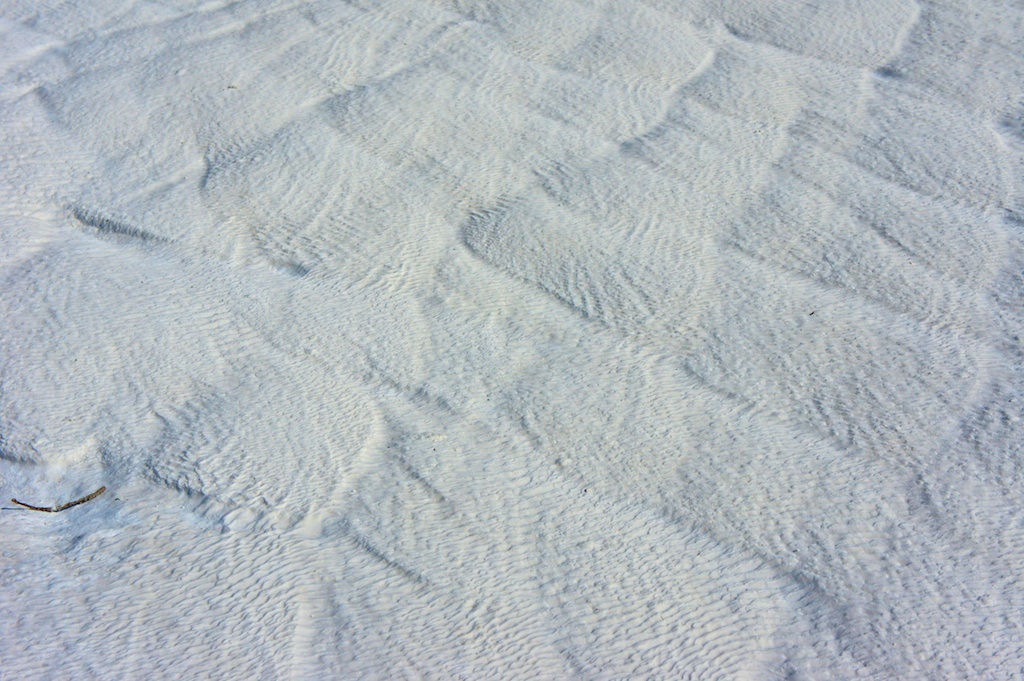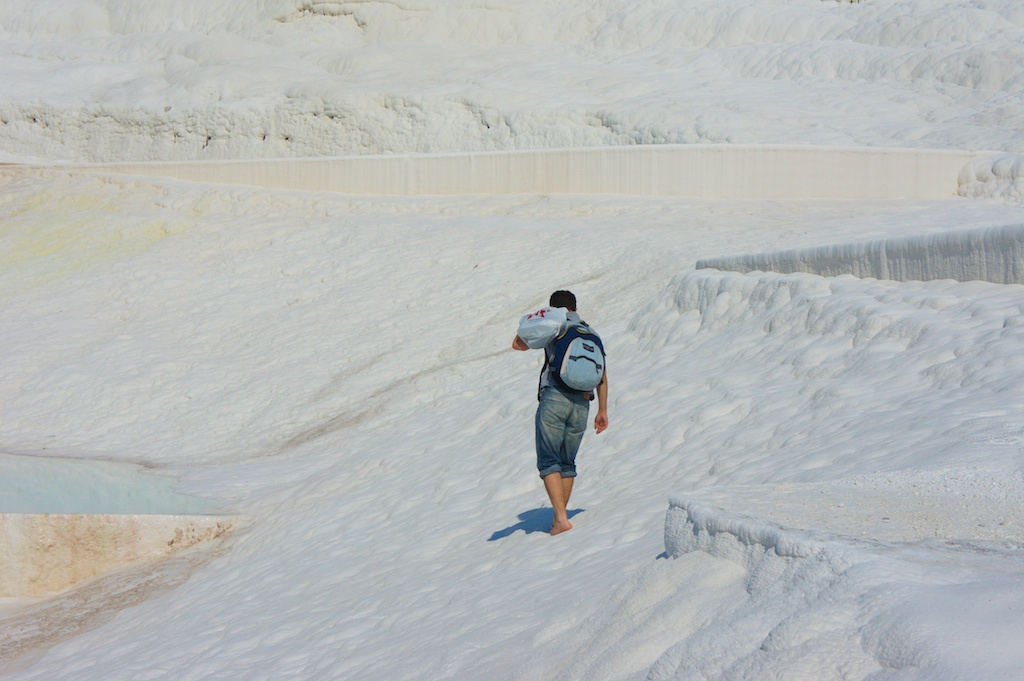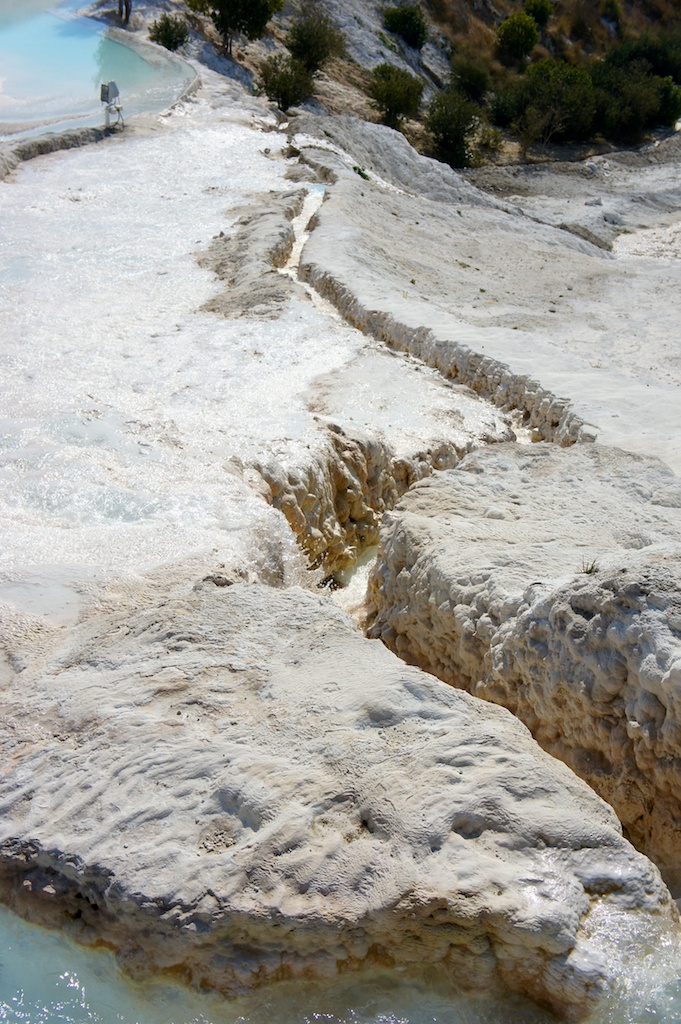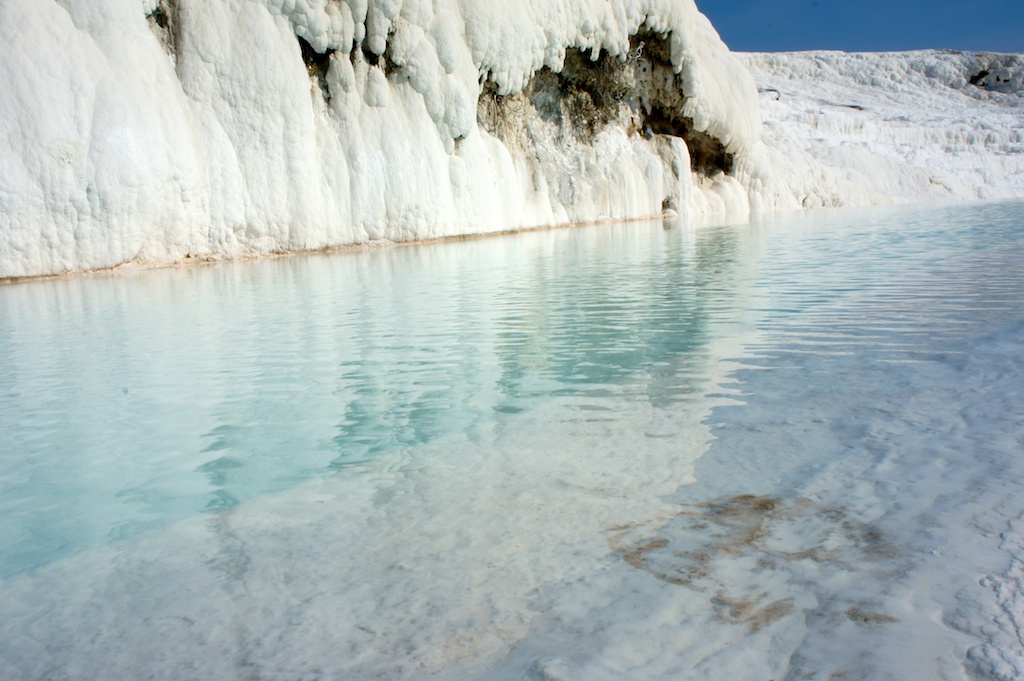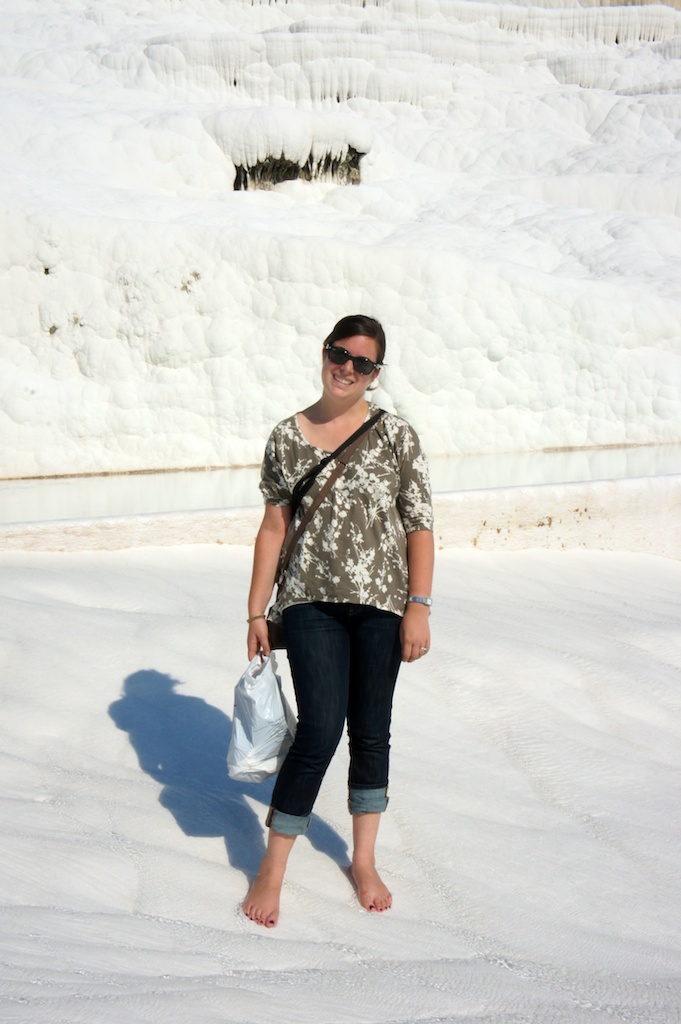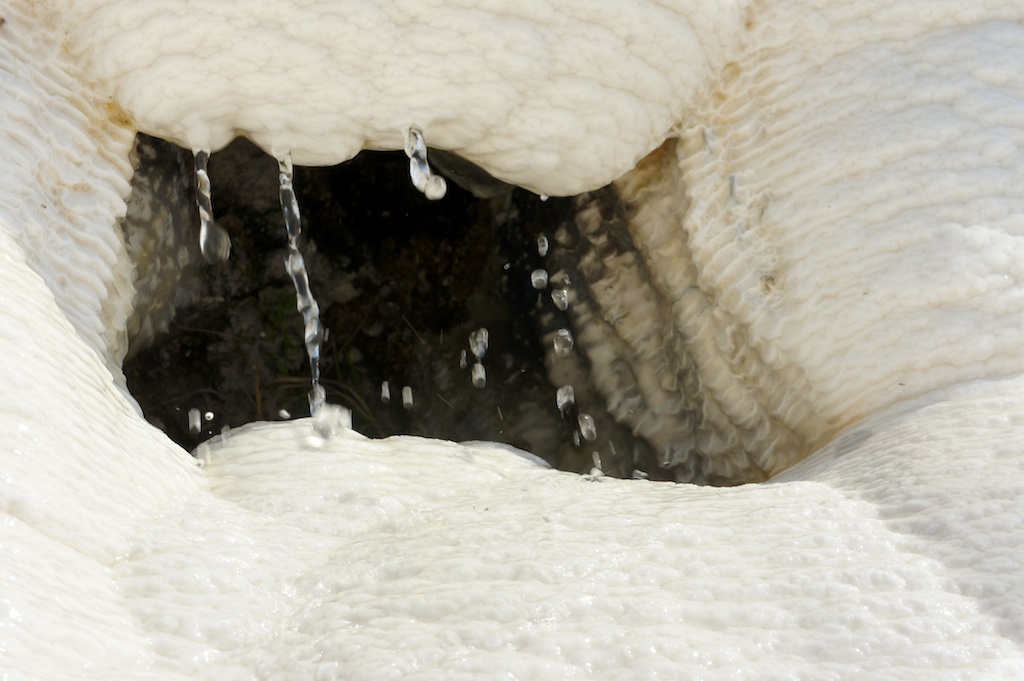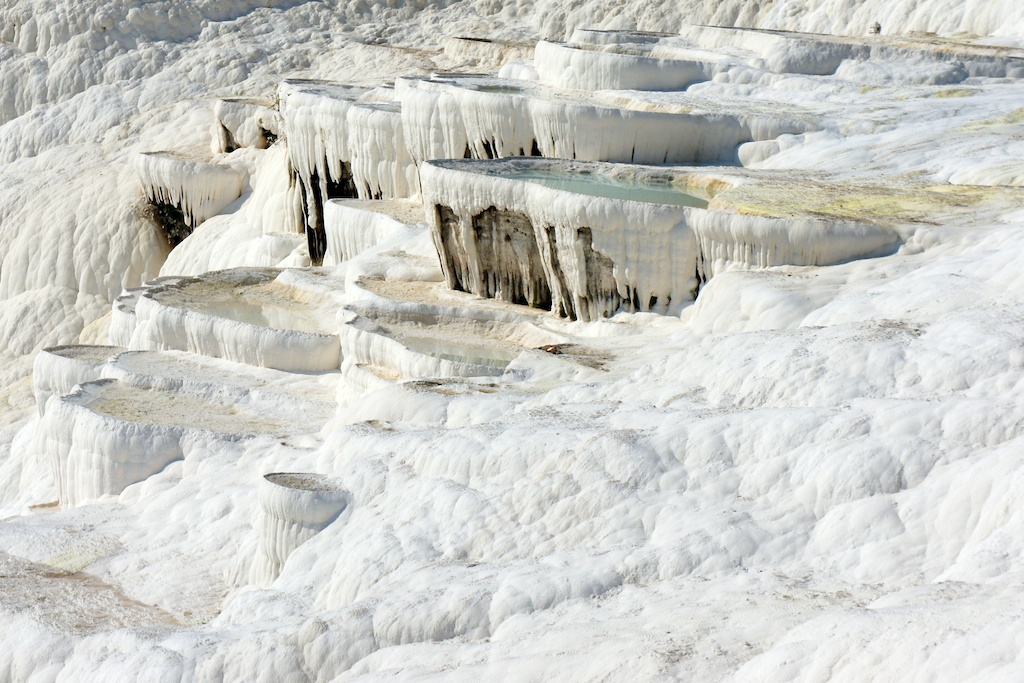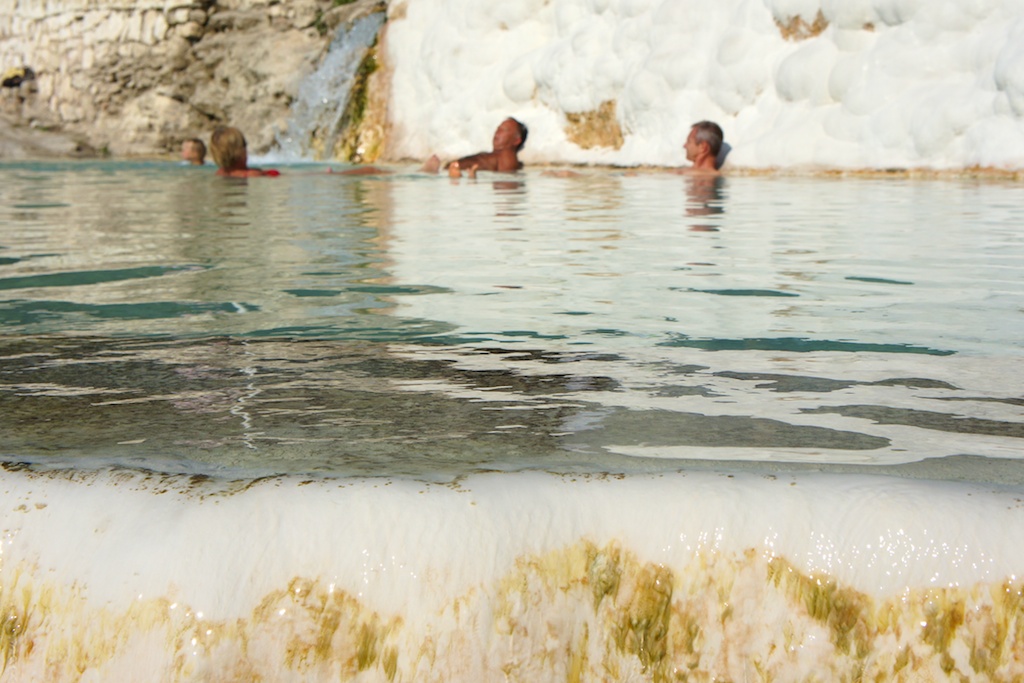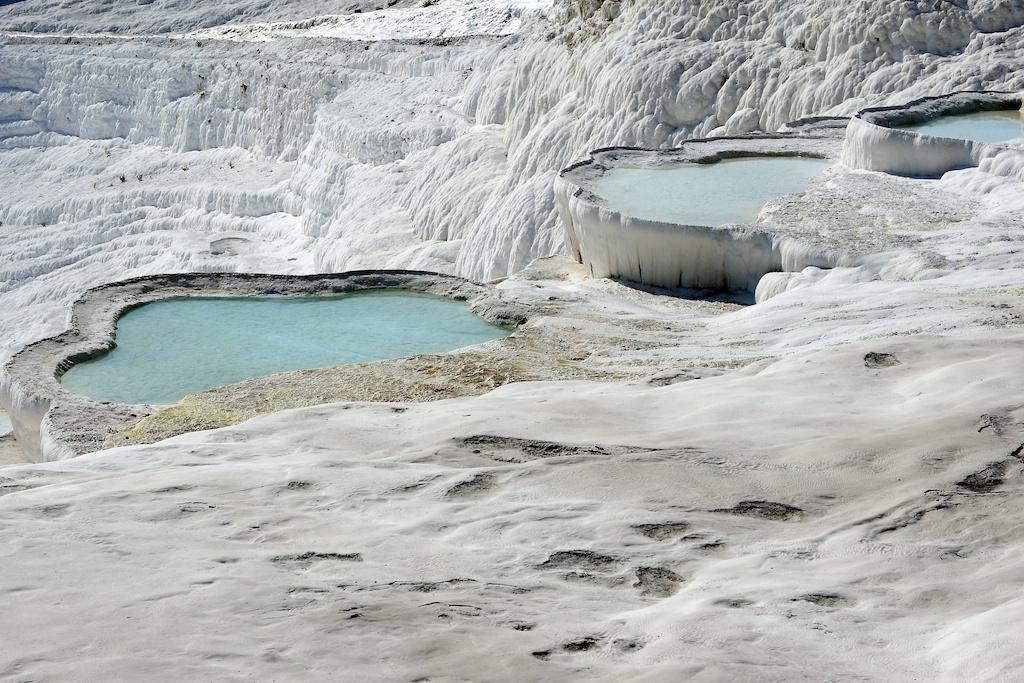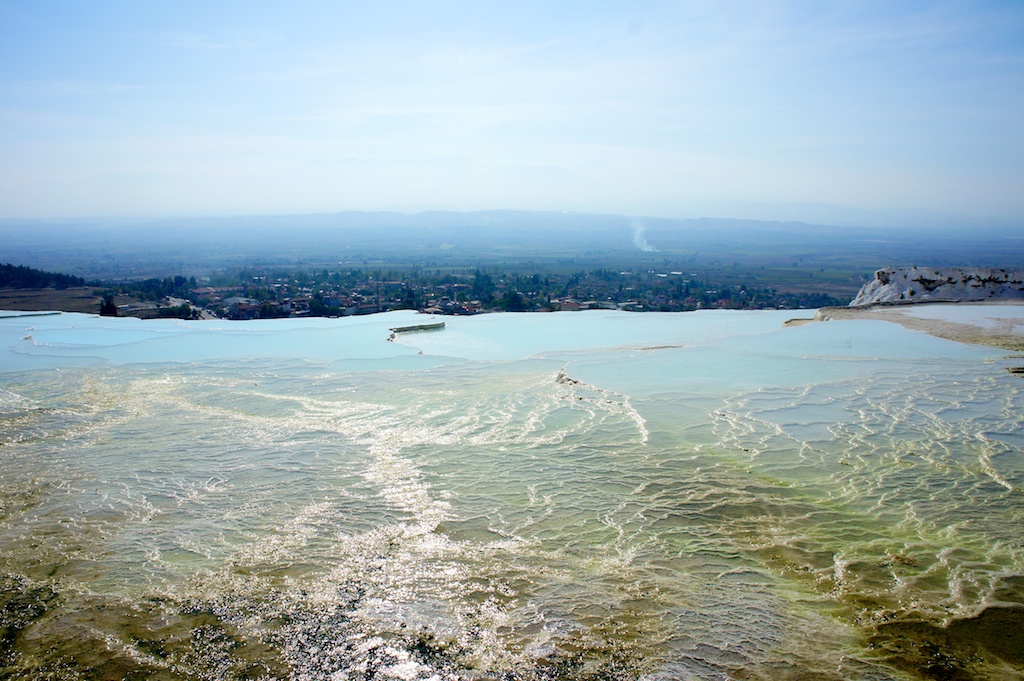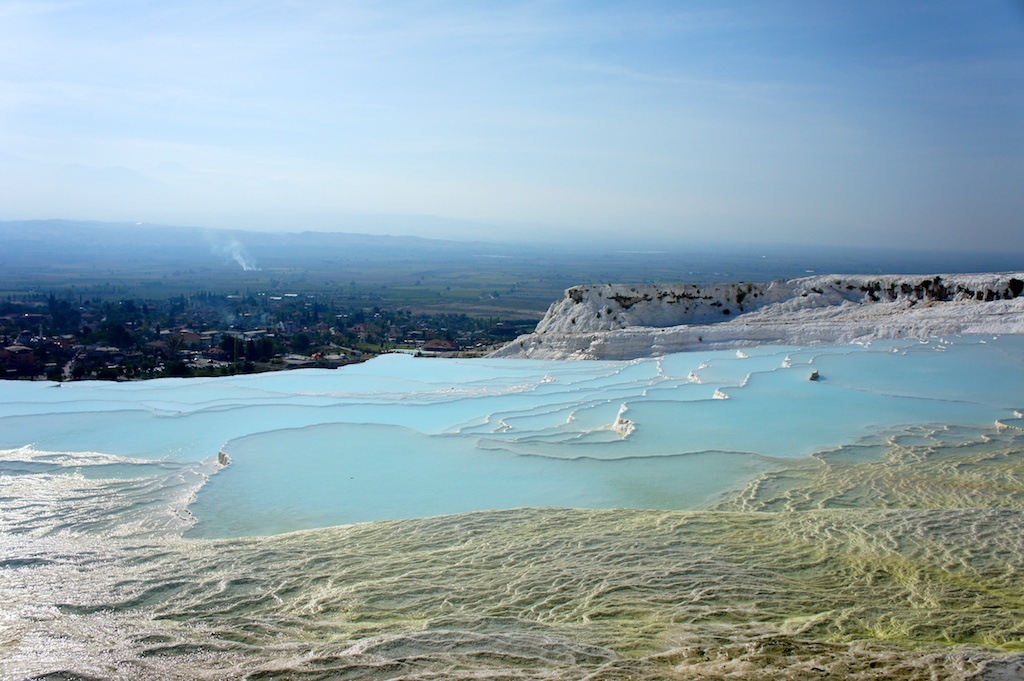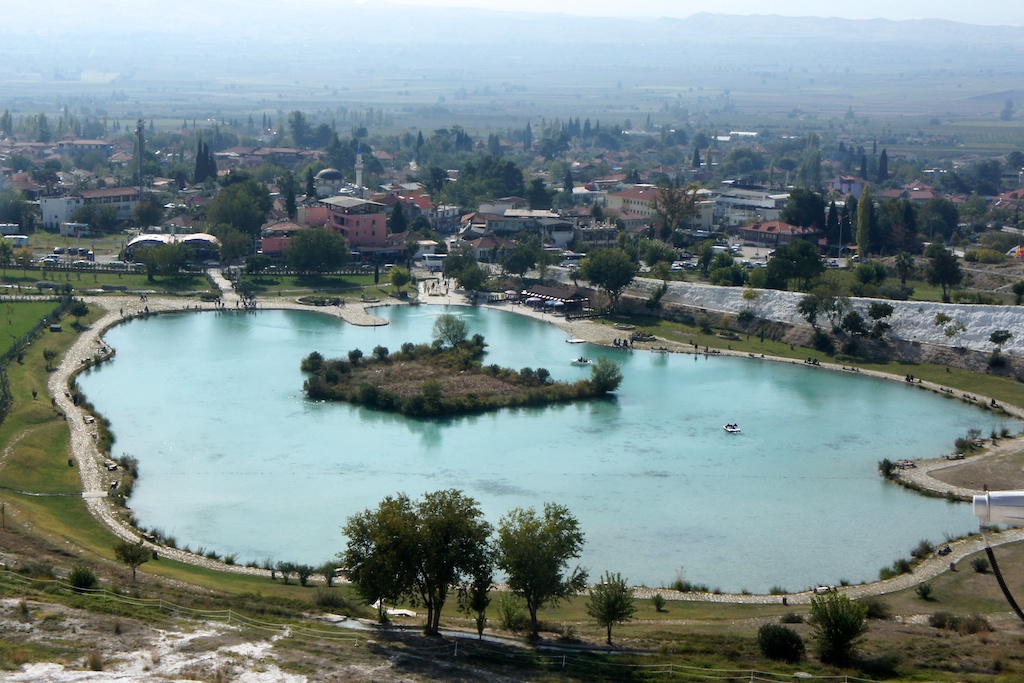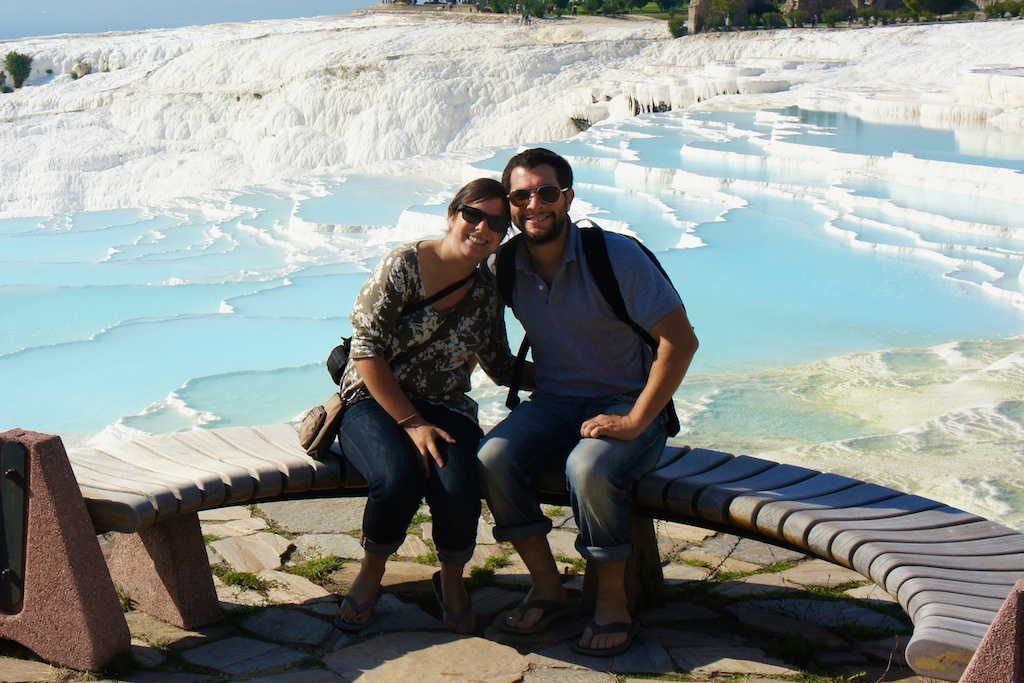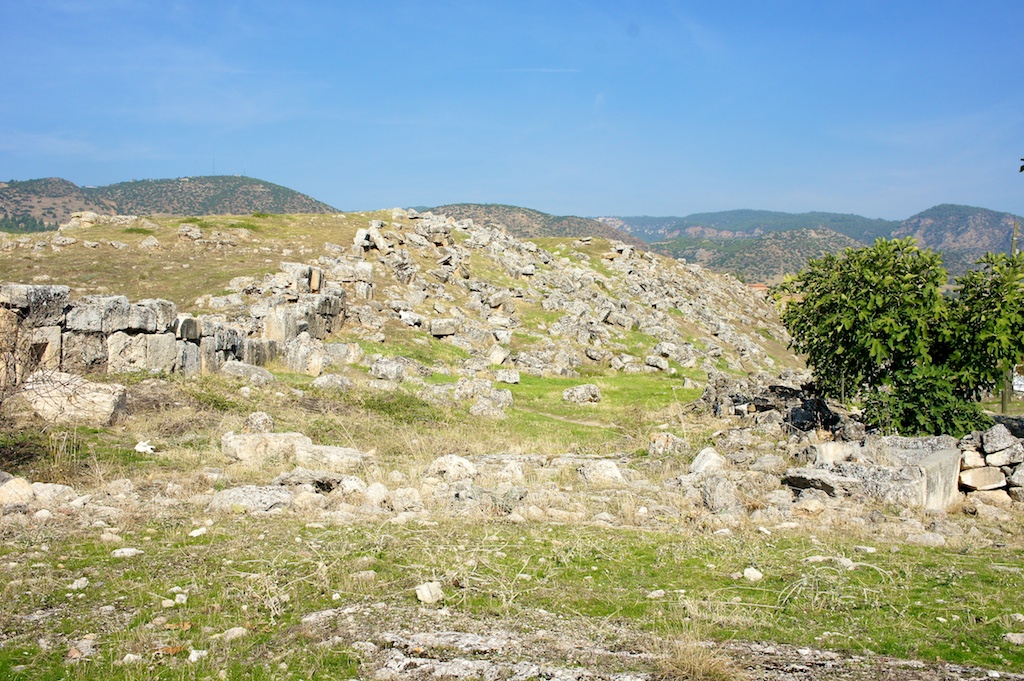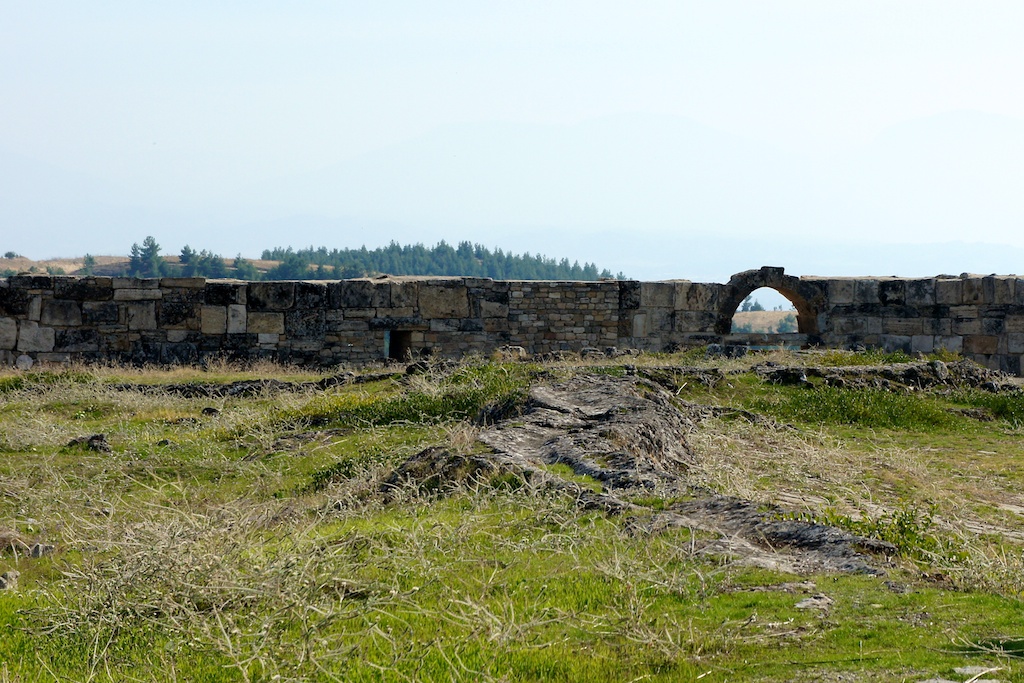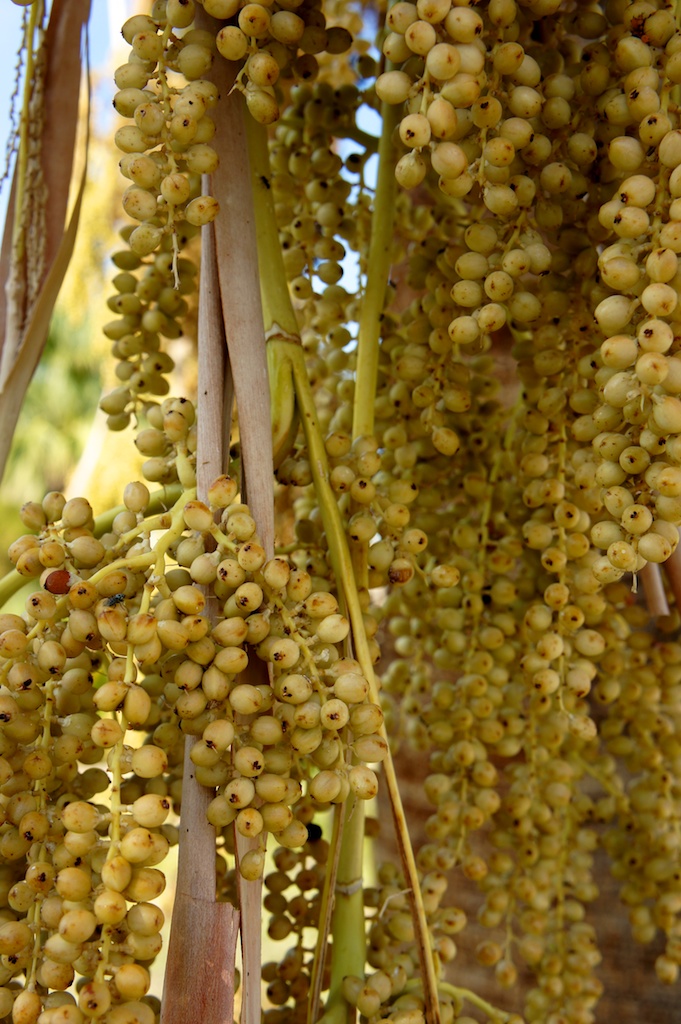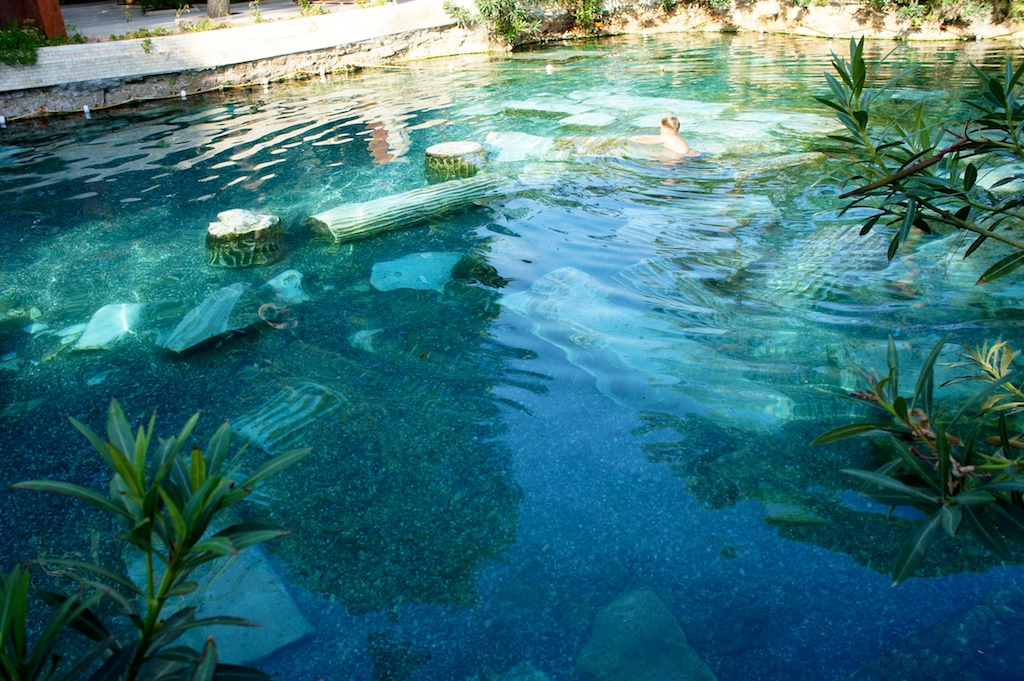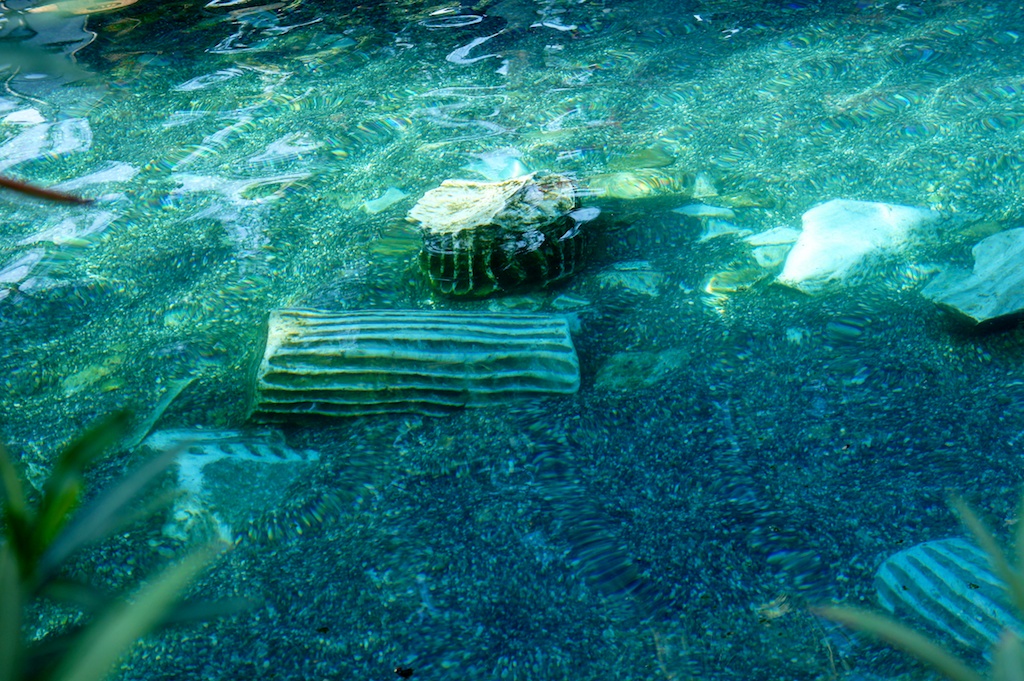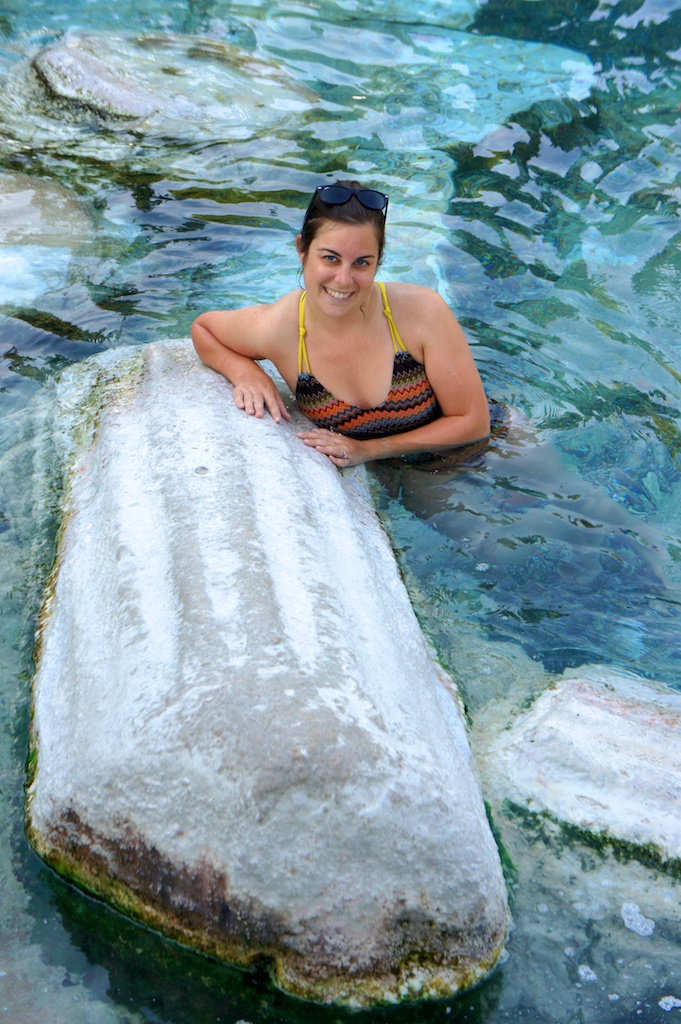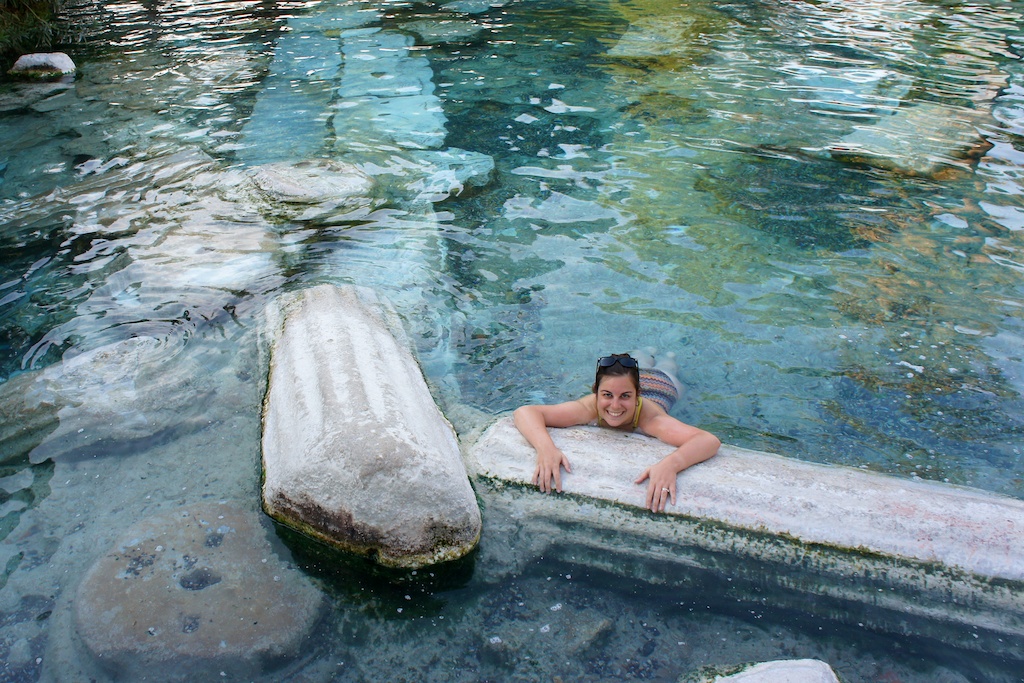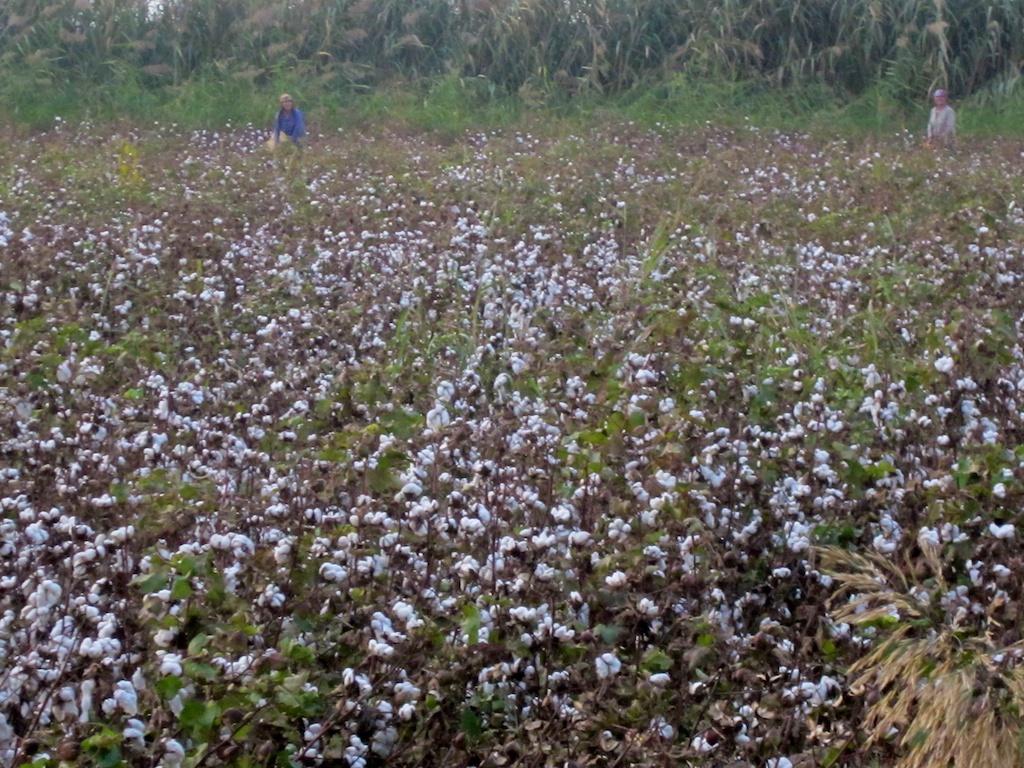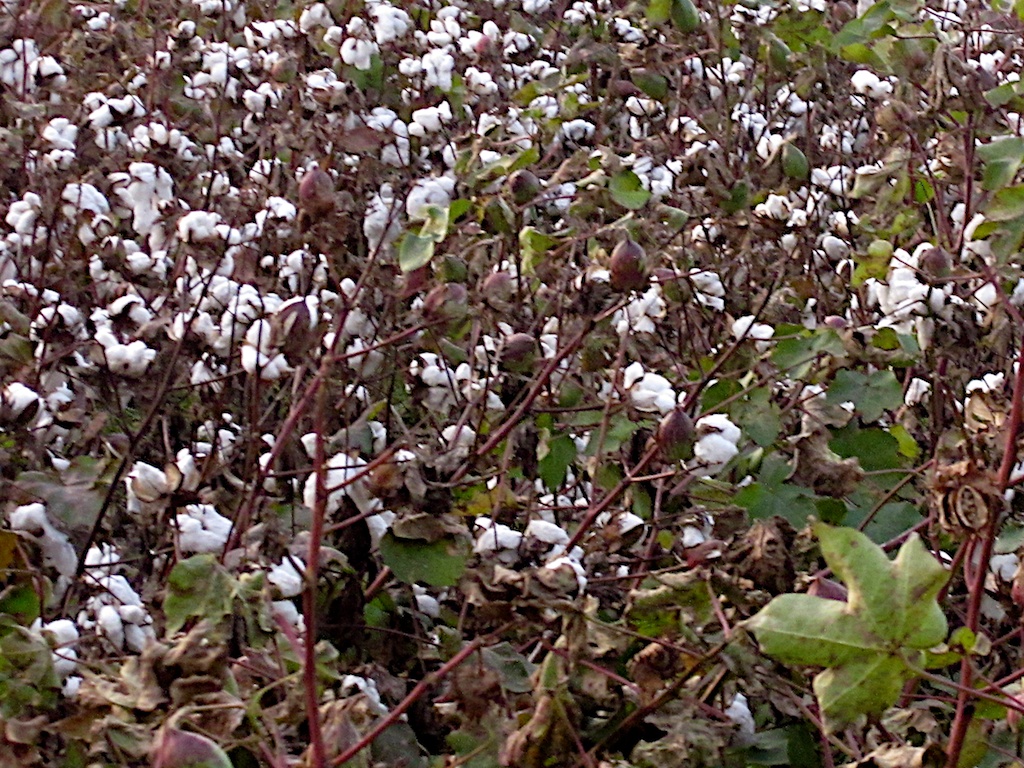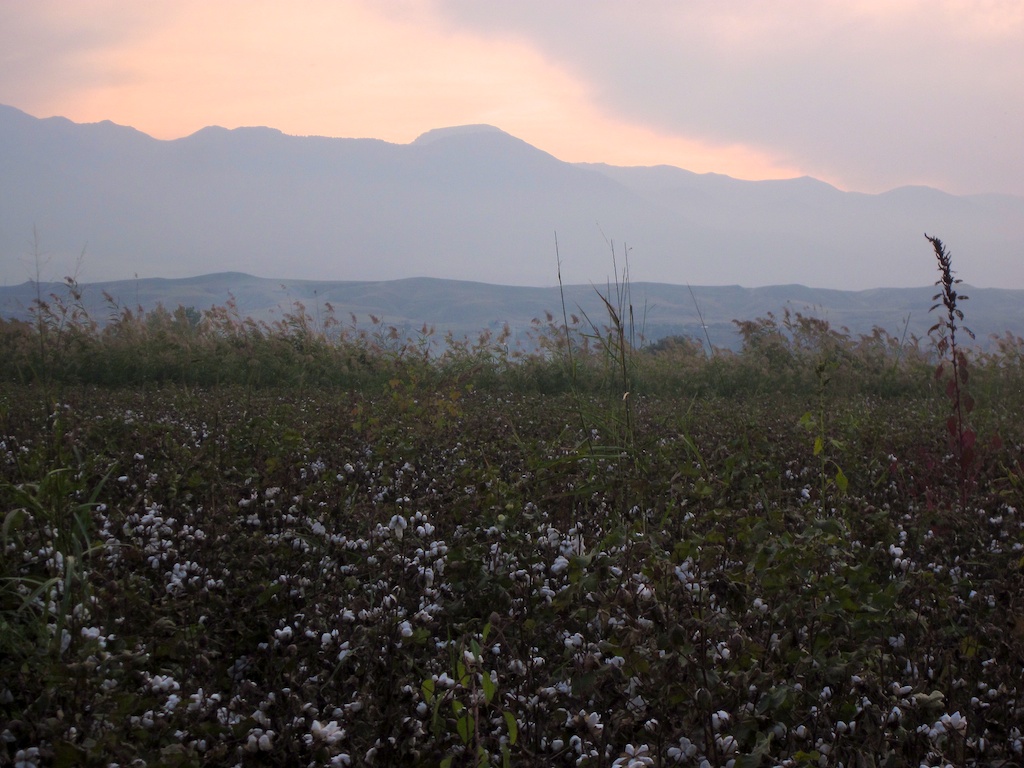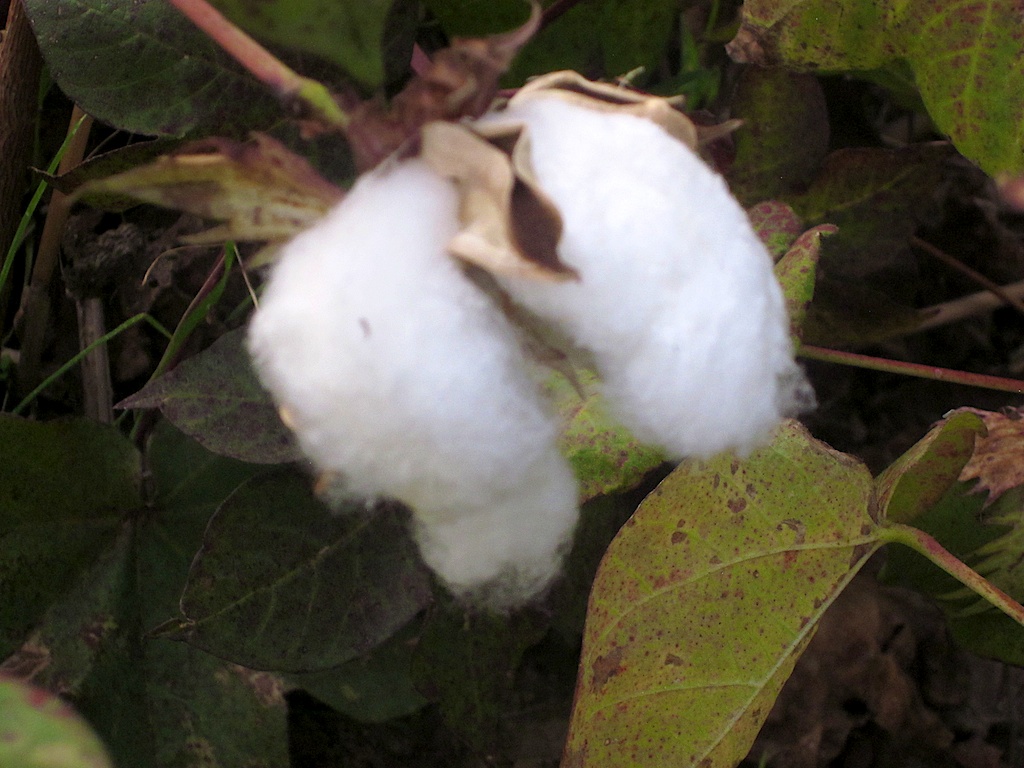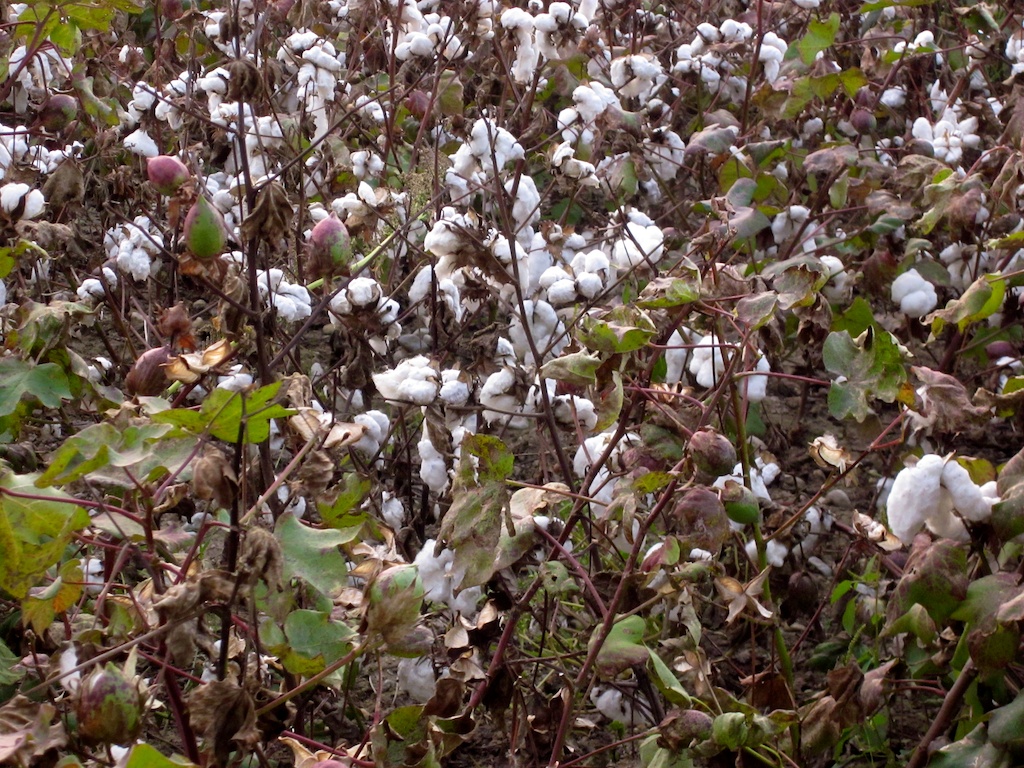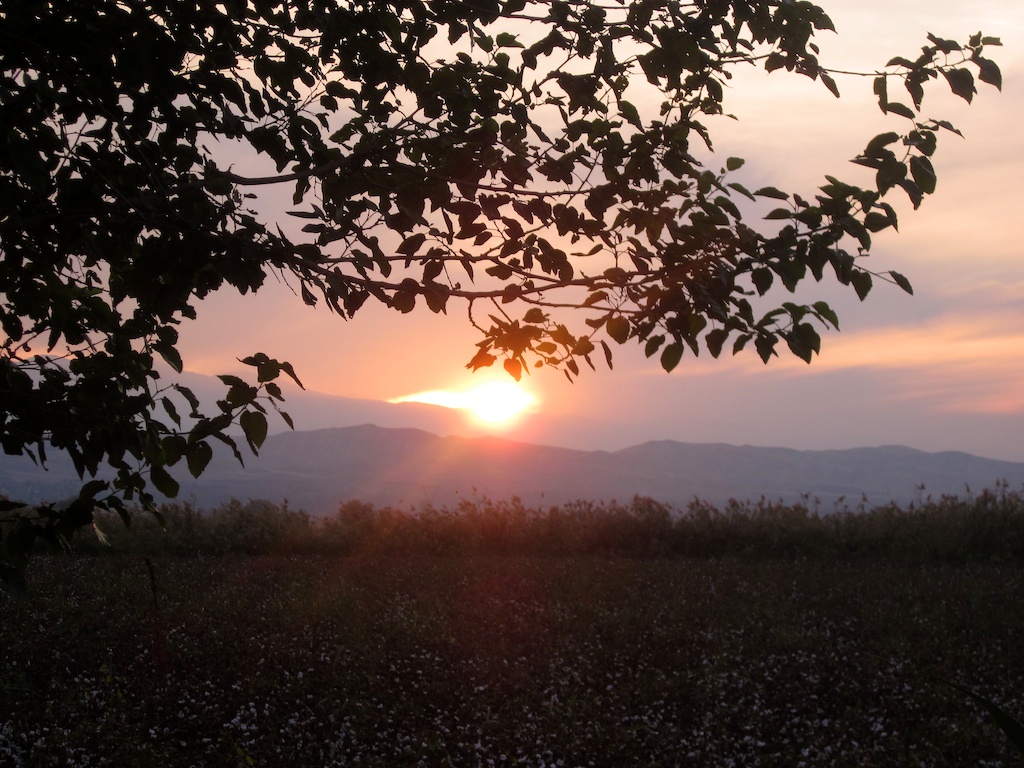Turkey: The White Wonderland of Pamukkale
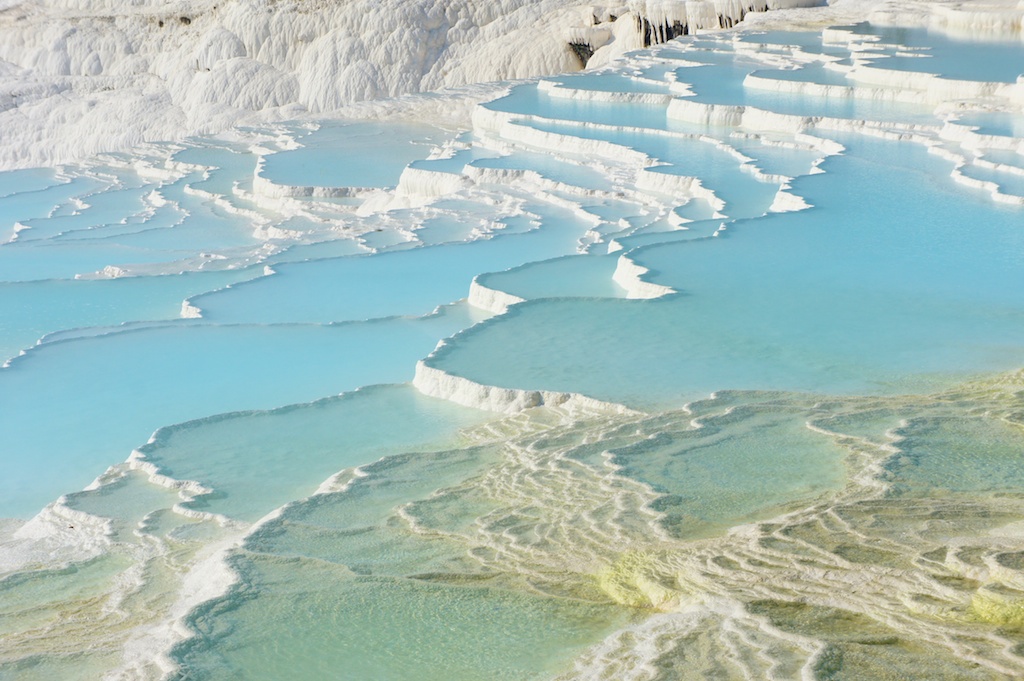 When we decided to go to Ephesus, we had another day in the area to explore. Most of the surrounding area is full of ancient ruins (Didyma, Miletus, Priene, etc.), but after Ephesus we were a bit "ruined" out. There are some beaches in the area but it wasn't quite hot enough for that. Last time I was Turkey I saw the natural wonder of Cappadocia, so I thought it would be fun if there was another place like that we could visit. As I began to expand my search of the area, I discovered Pamukkale. While not super close--it was about a 3 hour drive--it seemed like it could be pretty amazing. We did read some mixed reviews noting that it was not the natural wonder it used to be after having become a larger tourist attraction, but our hosts told us that they had guests who had gone recently and loved it, saying it was in better shape because there had been a lot of rain recently. We decided a nice drive along the Turkish countryside would be nice anyway, and decided to go for it.
When we decided to go to Ephesus, we had another day in the area to explore. Most of the surrounding area is full of ancient ruins (Didyma, Miletus, Priene, etc.), but after Ephesus we were a bit "ruined" out. There are some beaches in the area but it wasn't quite hot enough for that. Last time I was Turkey I saw the natural wonder of Cappadocia, so I thought it would be fun if there was another place like that we could visit. As I began to expand my search of the area, I discovered Pamukkale. While not super close--it was about a 3 hour drive--it seemed like it could be pretty amazing. We did read some mixed reviews noting that it was not the natural wonder it used to be after having become a larger tourist attraction, but our hosts told us that they had guests who had gone recently and loved it, saying it was in better shape because there had been a lot of rain recently. We decided a nice drive along the Turkish countryside would be nice anyway, and decided to go for it.
First off, the drive was lovely. There is some farmland, some more desert-like area, and lots of cute roadside diners (if they have diners in Turkey) and stands selling produce and olives. My favorite was the homemade brined olives packaged in water bottles. They also sold raw olives, not something you can really find in the U.S.! Naturally, we stopped for a snack (gözleme) and I bought a few fresh figs as well.
After the long drive, when you finally see the hulk of Pamukkale in front of you it is somewhat shocking: it looks like a snow-covered slope, about the size of an intermediate ski trail. But then you see incredibly clear-blue water trickling down it into a gorgeous lake. Pamukkale, which means "cotton castle" in Turkish.
It is made up of travertines, which are created from mineral-rich hot springs bubbling all around and depositing calcium carbonate, which starts as a soft jelly but eventually hardens. Luckily, they have begun making people remove their shoes to protect the travertines now so they are in much better shape than they used to be. I was afraid the travertines would be pointy or scratch to walk on but they actually feel quite smooth, but not slippery. And the beautiful clear water that is flowing everywhere is nice and warm.
We were lucky that we started our walk from the bottom. Above Pamukkale are the ancient ruins of Greco-Roman Hierapolis, and many tour buses begin their tours there at the top, allowing the tourists a few minutes to dip their feet in at the top of Pamukkale. So, it was relatively quiet and serene for most of our walk up the hill and we only had to push through some crowds at the very top.
At the top, we wandered around Hierapolis briefly, and then went to find it's famous Cleopatra's Pool, a pool built on hot springs, complete with ancient columns strewn about on the bottom. The pool is a lovely 36-57 °C, and although it was crowded it was still relaxing. We walked back down Pamukkale as the sun started to set.
On our drive home we stopped for another snack and came across actual cotton fields at sunset. Perfect end to a perfect day.
